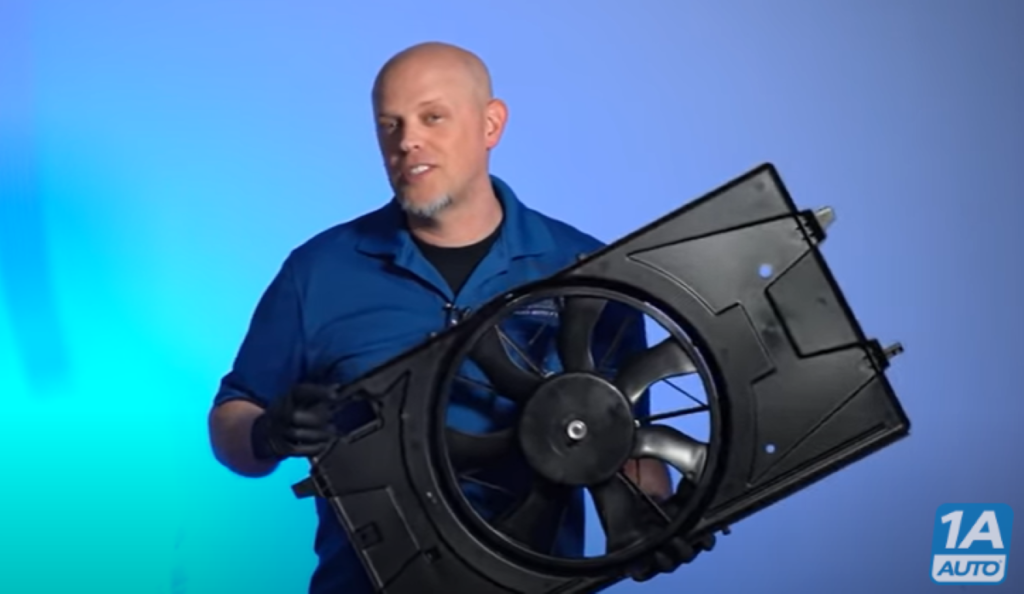If your engine is running hotter than usual and your car overheats when idling, find out how to tell if there’s a problem with the cooling system or an electrical part like the cooling fans with these tips.
How an Overheating Engine Affects Fuel Mileage

The ideal temperature for an engine is generally around 210 degrees Fahrenheit. If the engine is running hotter, the vehicle’s computer will compensate by dumping more fuel into the engine. That wastes fuel, it wont be used properly, and you’ll feel it when accelerating. Your vehicle will feel sluggish and not moving as fast.
If the engine runs hotter than usual, you might need to check the cooling fans.
Symptoms of an Overheating Engine

- Temperature gauge is higher than usual
- Warning light turns on
- Steam may be coming from under the hood
- May notice coolant pouring on the ground
- Car overheats when idling and cools down when driving
How Cooling Fans Can Cause a Car to Overheat When Idling
An engine that overheats when your car is at a stop or idling but cools down when driven is the main symptom of defective cooling fans. Maybe you notice your car is just running warm when driving on the highway, but it definitely overheats when you’re at a stop or idling. This is because you’ll still be getting airflow when the vehicle moves, which will cool the system down more than when at a stop.
How to Diagnose an Engine Running Hot
Steps to diagnose a car that overheats when driving and at idle
- Check the Coolant Level
If the vehicle is leaking coolant, there will be less coolant to cool the engine down. If it leaks too much coolant, the engine will be too hot to run.
A low coolant level can also affect the cooling fans. There is a fan switch on the engine side or the radiator side. If coolant level isn’t up to switch, it won’t turn on the fans when needed.
Make sure the engine is cold before checking the coolant level. You don’t want to remove the cap with the system hot. You can touch the upper radiator hose gently to tell how hot the engine is. If the hose is cool to touch and you can squeeze it, make sure there’s no pressure inside. Then carefully open the radiator cap. Make sure the coolant level is right up to the cap. If you have a reservoir that’s separate, make sure there’s enough coolant inside.
More on how to check for coolant leaks - Check the Cooling Fans
Inspect the cooling fans visually for signs of broken components. Make sure the electrical connector is connected. With the vehicle turned off, see if the fan spins. Spin it in the direction it normally spins, and listen for excessive noise or if the fan is stiff and frozen.
See if you can turn the fans on and off with an advanced scan tool. You can also view the temperature and monitor it while the engine is running. The fans should turn on at a certain temperature, which could be around 180 degrees Fahrenheit or more depending on the vehicle.
You can also check the fans by turning the vehicle on and putting the AC on its max setting. That will turn both cooling fans on.
If you tried to turn the fans on and it’s still not working, disconnect the electrical connector. The fans should have a two-wire connecter. They need power and ground to work. While commanding it on, take a test light and and go in between the two wires. If test light turns on, power is reaching the fan and the fan is faulty and needs to be replaced. - Check the Fuses and Relays
Remove the cover from the fuse box. Check the key on the back of the box cover if your vehicle has one for which fuse or relay you need to check.
More on how to check fuses


